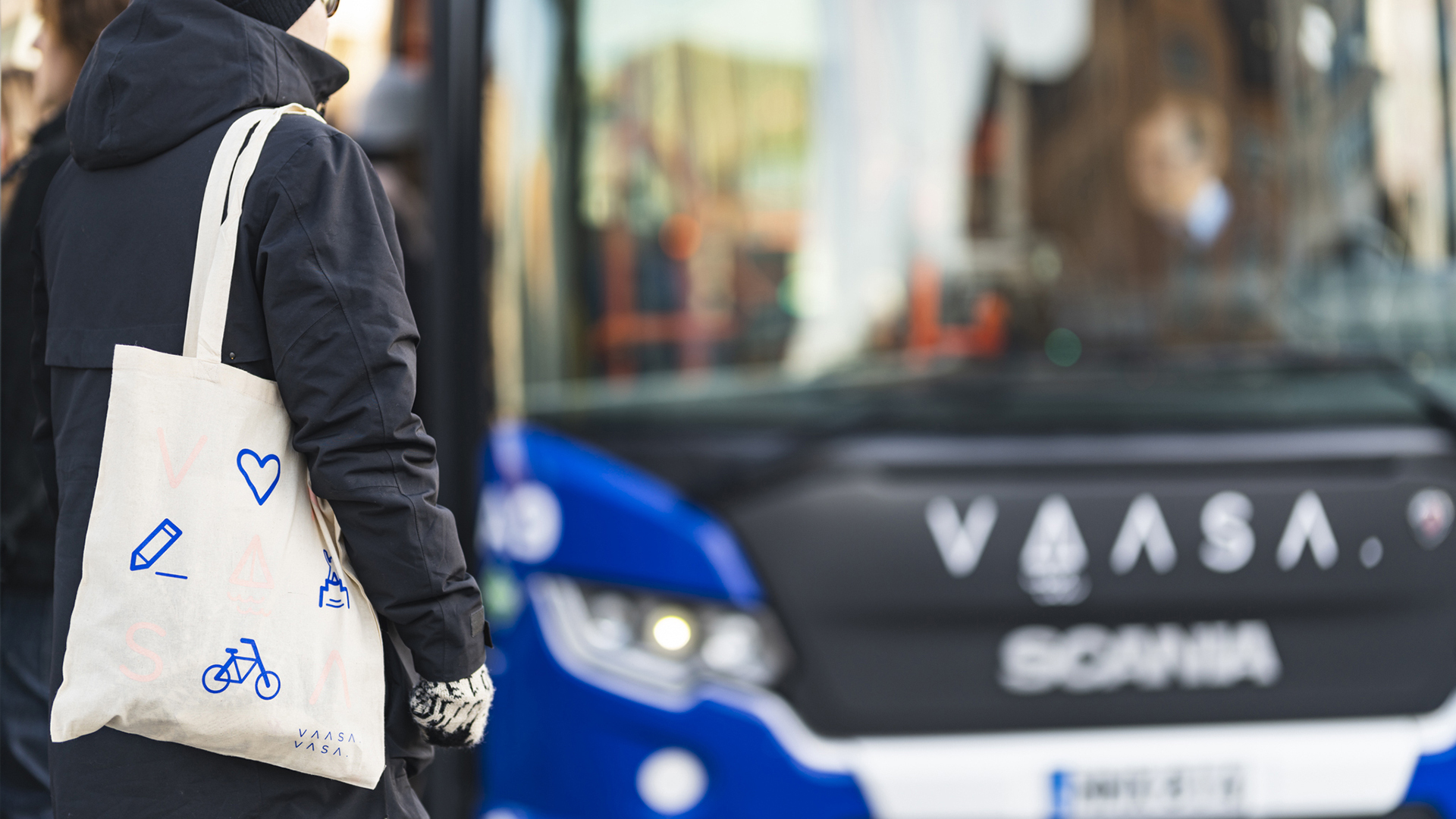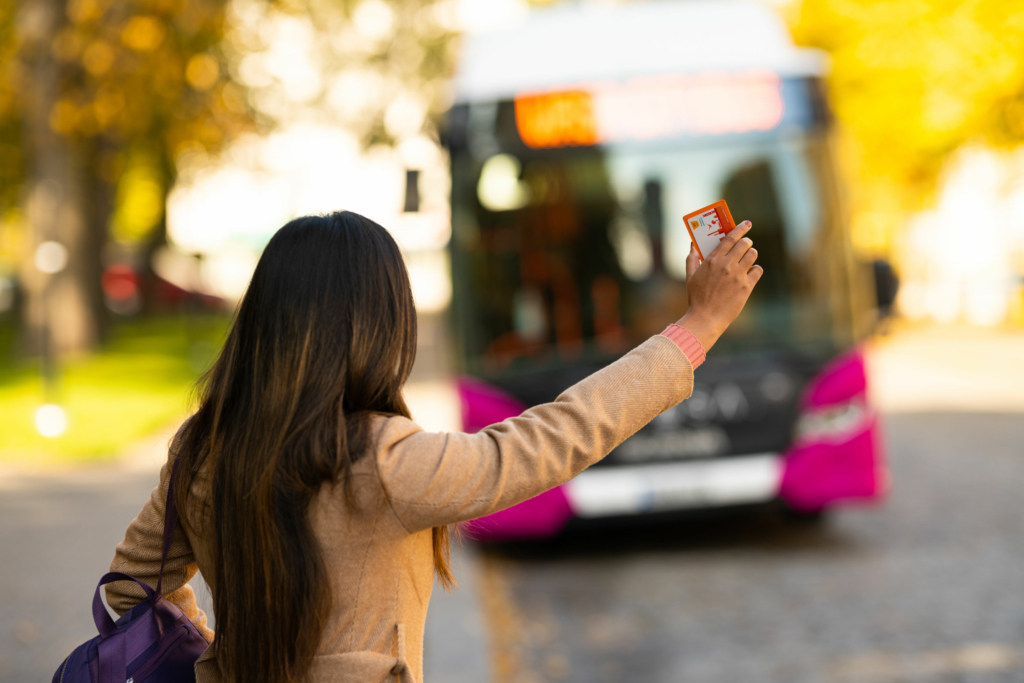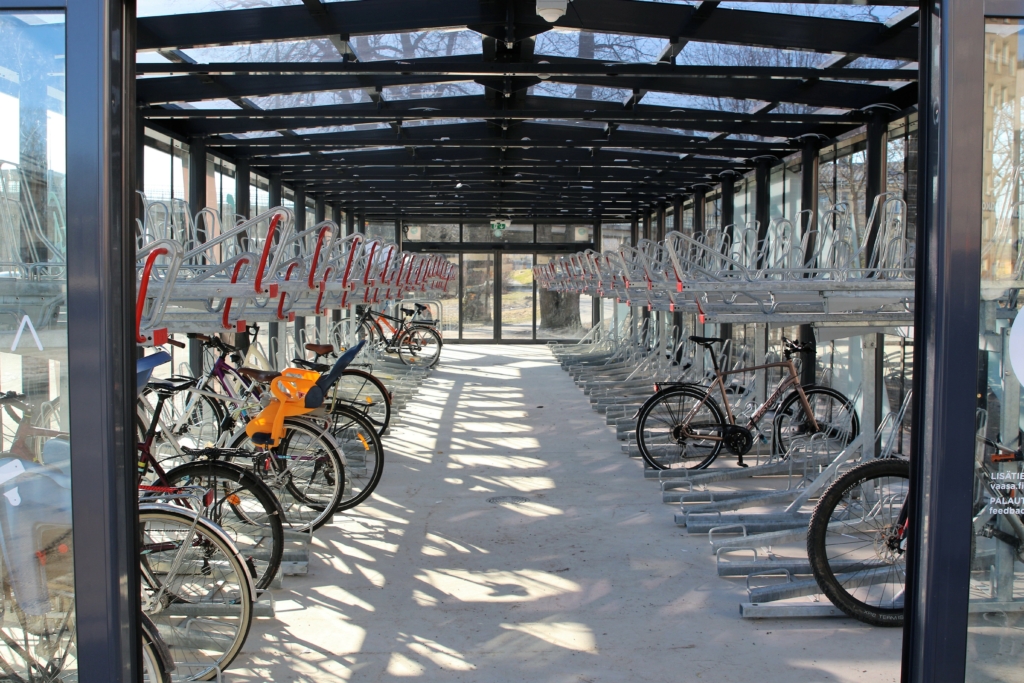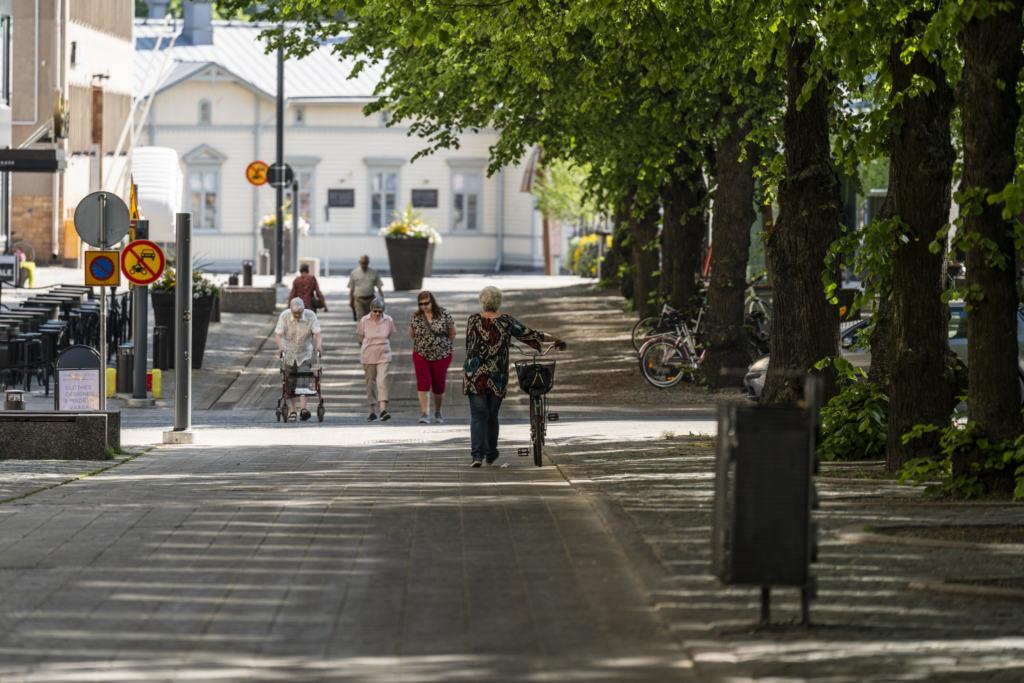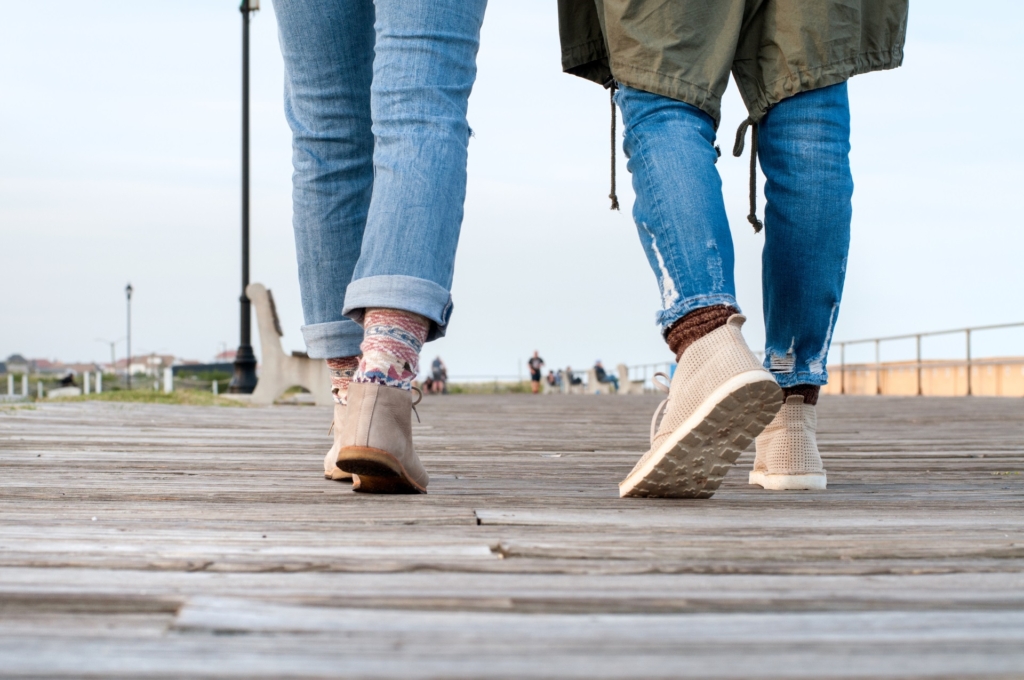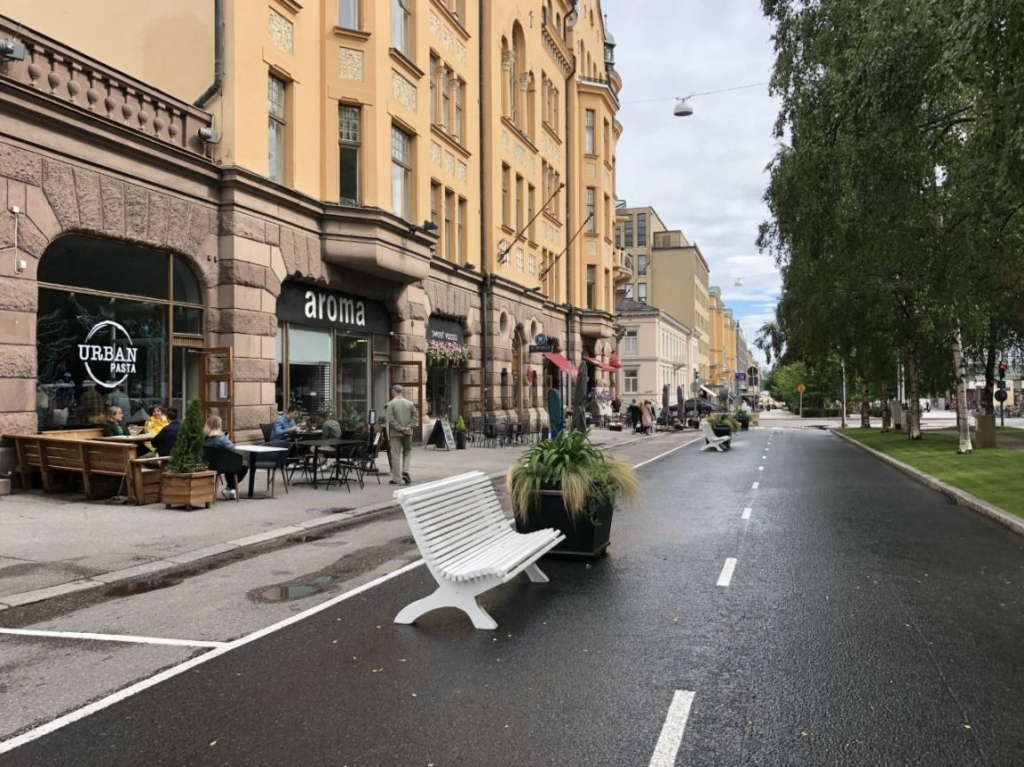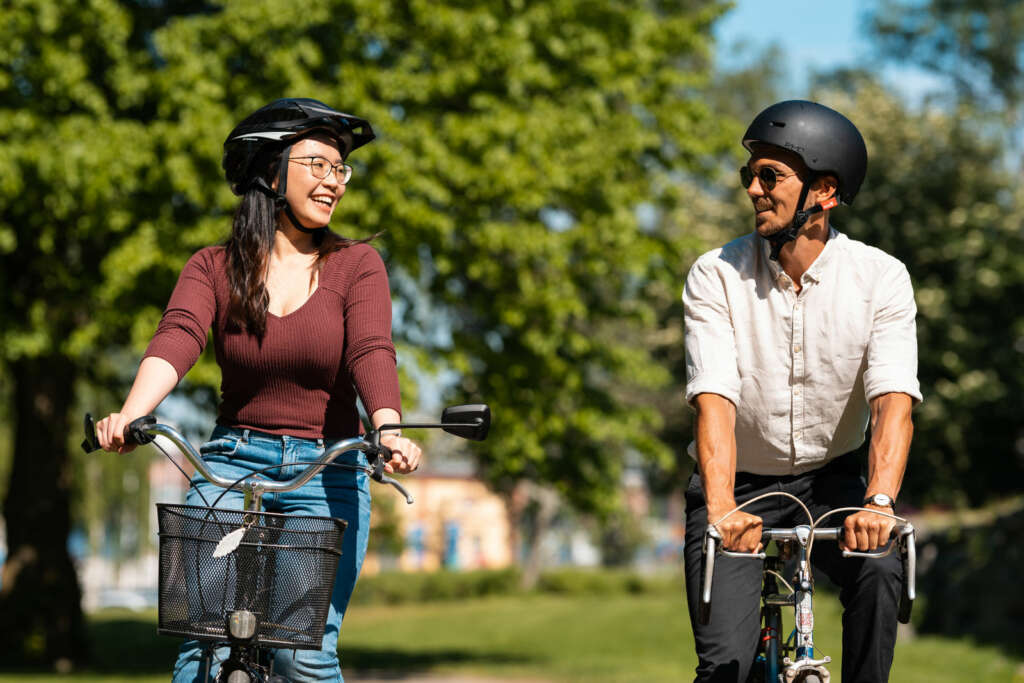Towards more sustainable mobility
In 2019, road transport accounted for around 30% of Vaasa’s total carbon dioxide emissions. Sustainable transport planning plays a key role in creating a climate-friendly and pleasant urban environment. The city is implementing a wide range of measures focused on traffic management, improving public transport, and promoting active mobility.
These efforts aim to reduce CO2 emissions, improve energy efficiency and promote sustainable mobility as part of the Carbon Neutral Vaasa 202X objective. Another aim is to create a safe, pleasant and healthy living environment for all residents.
Public transport and car sharing
Lifti public transport reform
A joint regional public transport service for the City of Vaasa and the Municipality of Mustasaari, Lifti, was launched in the summer of 2022. In practice this means twice as many daily services and the lowest prices in Finland. Lifti buses run on biogas, so by taking the bus, you can help reduce transportation emissions.
With the Lifti reform, the increased frequency of services has also resulted in an increase in passenger numbers. In 2023, Lifti carried a staggering 1.8 million passengers in total, marking a 50% increase compared to the previous year. One of the goals of the City of Vaasa is to further increase the number of public transport passengers.
Feedback on Lifti has been collected since its inception and used for further improvements in its services.
Biogas buses contribute to Vaasa’s carbon neutrality target
Vaasa Region Public Transport Lifti operates 22 gas-powered buses using biogas produced at Stormossen. Estimates suggest that using biogas can reduce CO2 emissions by up to 90% compared to fossil fuels over the entire life cycle of the fuel. Biogas bus trips make up over 75% of all bus journeys in Vaasa, and the number of journeys taken with biogas buses has increased by 70% compared to the period prior to the Lifti public transport reform.
The Carbon Neutral Vaasa 202X target applies to all energy use in the urban area, with transportation being one of the largest sources of carbon dioxide emissions. Using transport biogas alone will not be sufficient to meet the targets, but public transport is a significant tool for reducing overall emissions from transportation.
Free Lifti days and event tickets
Vaasa Region Public Transport event tickets have been on trial since 2023, when event tickets became available during the Vaasa Sport ice hockey season (in Finnish). The event ticket combines a public transport ticket and an event admission ticket, and it allows travel on buses before and after the event.
In addition, Lifti offers additional bus services and routes during many events. For example, during the annual EnergyWeek and Strömsö Day, Lifti buses travel directly to the site. The purpose of providing shuttle bus services is to encourage the use of public transport for travelling to events.
Lifti also organises special days when bus travel is free of charge, such as during the annual European Mobility Week from 16 to 22 September. At the end of the week, on Car-Free Day, the City of Vaasa has traditionally offered free bus rides on Lifti.
Mini-Lifti shared cars
Mini-Lifti cars are intended for all Vaasa residents. On weekdays, the cars are used by city employees, but in the evenings and weekends anyone can rent them. During the summer holiday season, the Mini-Lifti shared cars are also available for rental on weekdays.
The three Mini-Lifti shared cars can be found in the Technical Office car park at Kirkkopuistikko 26, where they have a designated parking spot and medium-speed charging points. During the summer of 2024, the previous cars were replaced with three Hyundai Kona Electric vehicles with automatic transmission.
Car sharing is a cost-effective and convenient way to get around. By choosing a fully electric car, you also help reduce transportation emissions.
Read more on the Mini-Lifti website.
Cycling
Bicycle lanes
The City of Vaasa aims to increase the number of bicycle lanes and routes, ensure seamless and safe connections to schools, sports and event venues, and provide high-quality parking for bicycles.
The target network plan of the Vaasa walking and cycling promotion programme (in Finnish) aims for around 50 km of main cycling routes that meet a high quality standard. The promotion programme has been prepared in cooperation with Sitowise, a company specialising in the Nordic built environment. The work has received state aid for mobility management from the Finnish Transport and Communications Agency Traficom.
Many measures have been taken to develop the bicycle lanes. For example, in 2023 the Gerby high-quality lane was completed, and in 2020 the Vaskiluoto Baana bicycle lane (in Finnish) was finished. Both contributed significantly to the commuter cycling infrastructure in the area. Read more about the development of the bicycle lane network in the Cycling Alliance section.
Bicycle parking development programme
Vaasa is currently running a Bicycle Parking Action Plan, which aims to identify the current state of bicycle parking, increase safe bicycle parking spaces, and promote cycling. The project started at the end of 2023 and will run until mid-September 2024. The project has been funded through a state grant.
Bicycle garage
One concrete step to improve bicycle parking is the construction of a glass-walled bicycle garage in front of the Vaasa railway station. The official opening of the garage took place during National Cycling Week in May 2023. The bicycle garage was built as part of the master plan for Vaasa’s pedestrian centre (in Finnish), which aims to calm traffic in the city centre and enhance mobility for walkers and cyclists, among other things.
The garage is a free and safe way to park your bike in the city centre. The camera-monitored garage has a total of 156 bike parking spaces on two floors. It is located opposite the railway station, at the northern end of Asemanpuisto park and functions automatically via a mobile app. The garage’s operating instructions and rules can be found here.
Bicycle lanes as carbon sinks
At the beginning of 2023, Vaasa launched the Bicycle Lanes as Carbon Sinks project, which aims to study how biochar could be used in the construction of bicycle lanes to mitigate carbon dioxide emissions. The preliminary study will examine the environmental impacts and costs of biochar. The goal is to create an experimental structure for assessing the suitability and carbon neutrality of biochar. The results of the study will help to understand how biochar could be used more widely in sustainable urban building solutions and in combating climate change.
The project received funding from Business Finland. Read more about the project on the Business Finland website.
The Cycling Alliance
In 2023, Vaasa launched a cycling project to create a 50-kilometre network of high-quality pedestrian and bicycle lanes. The lanes will be constructed by Vaasan Pyöräilyallianssi, a collaboration between the City of Vaasa, GRK Suomi, and Sitowise Oyj. The project will run until 2029 and it will help support the City of Vaasa’s goal to be carbon neutral by the end of the 2020s. One way to reduce carbon dioxide emissions from transport is to increase cycling and walking.
Learn more about the project on the Sitowise website (in Finnish).
Walking
Promoting walking
One of Vaasa’s aims is to make walking the preferred mode of transport in the city centre, in addition to cycling. This objective is closely linked to the Carbon Neutral Vaasa 202X goal and the promotion of sustainable mobility.
The promotion of walking has been included in Vaasa’s Walking and Cycling Promotion Programme (in Finnish). When designing a pedestrian network, it is important to consider factors such as comfort, safety, flow and accessibility.
Development and expansion of Vaasa’s pedestrian centre
The goals for the development and expansion of Vaasa’s pedestrian centre are to enhance the vitality, appeal, pleasantness, and functionality of the city centre. Measures have also been taken to calm traffic in the city centre and improve the flow of traffic, especially for pedestrians and cyclists.
The master plan for the pedestrian city centre (in Finnish) covers the entire area of Hovioikeudenpuistikko, the area around the Market Square and parts of the fire lanes and other key street areas in the city centre.
Expansion of the pedestrian centre
Vaasa’s pedestrian centre was extended in 2022 with a new pedestrian street section located on Hovioikeudenpuistikko, between the railway station and Pitkäkatu. The new pedestrian street enhances pedestrian mobility in the city centre, improves the urban landscape, and increases the appeal of the urban environment. Vaasa received a national award for expanding the pedestrian centre in 2023. According to a survey, the pedestrian street was the most vibrant area in Vaasa in 2024.
Summer promenade
Vaasa has also had a summer promenade since 2020, when the north side of Hovioikeudenpuistikko is closed to through traffic between Raastuvankatu and Kirkkopuistikko. The traffic lights are disabled, and the crossing across Raastuvankatu has been extended to the full width of the promenade. The summer promenade has received a lot of positive feedback not only from residents but also from nearby businesses and their customers.
Mobility and city planning
15-minute city
Vaasa’s vision is to be a truly functional 15-minute city, where services, schools, sports and recreation facilities, and other meeting places are within walking or cycling distance of about 15 minutes for the majority of residents. The aim of the master plan is to maintain a cohesive urban fabric and focus on district centres, where services and housing are closely integrated, minimising the need for mobility.
The idea is to develop the pedestrian and cycling network as a fast and attractive mobility option. The ultimate objective is for the streets in the city centre to become public spaces offering a range of activities beyond just mobility, and for urban areas to be transformed into people-oriented social meeting places.

